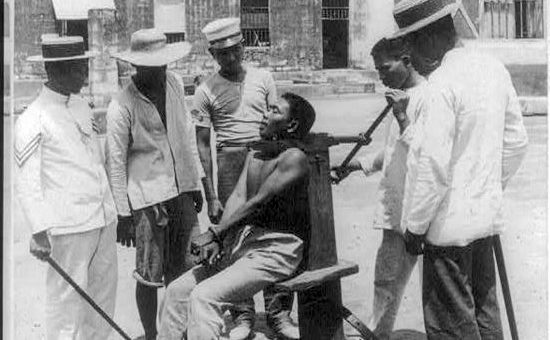
The garrote was used in Spain, Puerto Rico, Cuba and the Philippines during the 1800s and early 1900s. It was a slow, torturous way to murder criminals.
While there were numerous different types of garrotes, general descriptions of the practice say a person was made to sit on a stool with his back against an upright board. A wooden collar, reinforced with iron or brass strips, was placed around the person’s neck and the executioner stood behind him, twisting a long wooden bar that would tighten the collar until the person’s neck was broken.
In some chair models, the back board had a long screw sticking out that would penetrate the sitter’s neck and push into his spinal cord when the collar was tightened. This process could take up to fifteen minutes, during which the sitter was made to suffer as a price for his criminal actions.
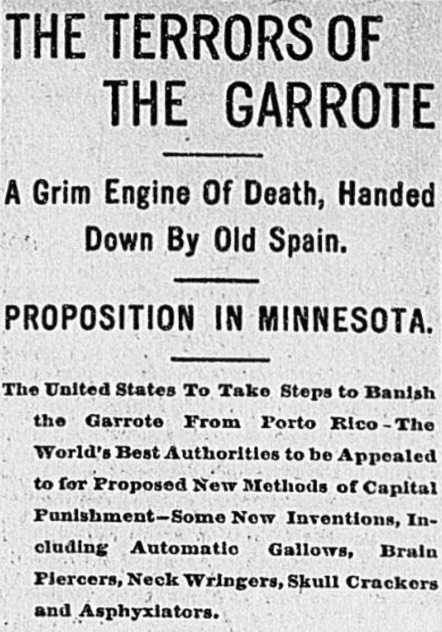
1. Invention of the Garrote
There are a number of different stories and theories as to the invention of the garrote. One story that was published in the late 1800s was that the instrument of death was invented by a Spanish man named Garrote. He was an ironworker and, after witnessing a family member’s hanging being bungled on the gallows, he made it his mission to invent a more humane form of execution.
Other sources claim that the garrote was a cruel relic of the Spanish Inquisition. The victim of the crude machine was meant to endure some suffering as part of his punishment before he was sent to the afterlife.
Still, there is another claim that the garrote was introduced to Spain by the Moors in the 700s.
Heretics, common criminals, and those of noble blood were sent to perish by the tight embrace of the garrote. There is no record of anyone ever surviving their death sentence as there was with the gallows. [1] [2]
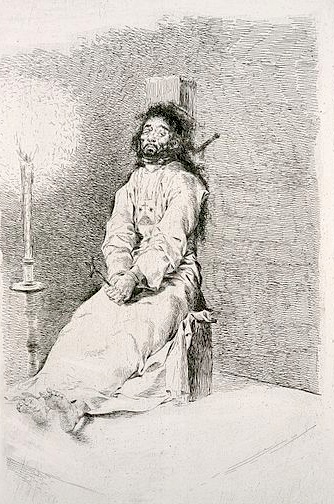
2. The Executioner was a Murderer
The executioner was called el verdugo. It was his job to slowly (or quickly) strangle murderers who had been sentenced to die.
Incidentally, el verdugo was also a murderer who had been given a death sentence. He is chosen for this position only after a previous executioner has left the position.
For many reasons, this was a dream job for a convicted murderer. The person chosen for the position was given a private apartment inside the prison. He ate better food than the other inmates. Furthermore, for every execution he performed, he was paid $17 and time was taken off his sentence.
It was reported that one Spanish executioner was so busy that he was released from prison after only seven years of work. He had saved all of the money he earned from executing other murderers that he stepped into the world with a great deal of money.
However, people do not take kindly to murderers turned executioners, and he was stabbed to death just three days after his release. [3]
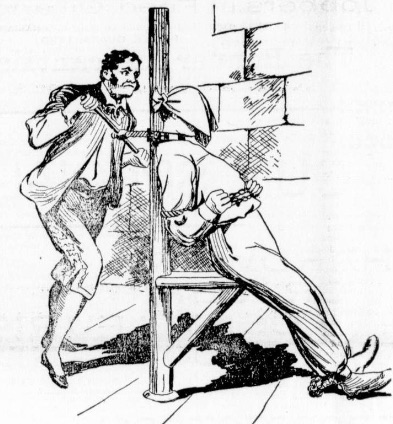
3. 24 Hours Before Death
Like France’s ritual with the guillotine, Spain and its colonies had pre-execution rituals. Twenty-four hours before a person was executed, he was placed in a special cell. Priests cared for the man and their sole objective was to have the criminal confess to all of his crimes and petty sins.
The criminal was then dressed for the garrote. First, he is made to put on a black tunic that left his neck exposed. Next, a black cap was placed on his head and he is marched out to his execution.
If the criminal had murdered someone close to the King, he was made to wear a yellow tunic. A cap of yellow with red spots was placed on his head.
The scaffold had several steps leading up to it and the criminal is escorted or dragged to the chair. As soon as he is seated, the executioner kneels before him and asks the criminal for pardon.
Whether or not the criminal pardons the executioner, the scene has been set for the garrote’s tight embrace. [4]
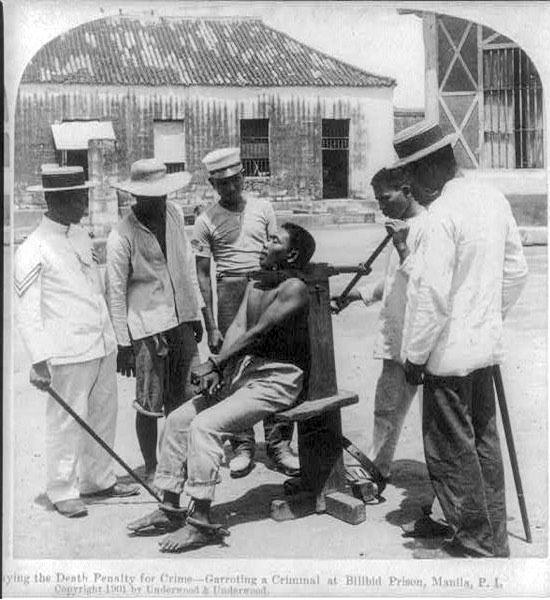
4. A Way to Avoid the Slow Death
Like all forms of capital punishment, the garrote did little to deter people from committing murder. However, the method of death was greatly feared.
In 1926, Cuba sentenced a man to death for murdering his aunt. On the day of his execution, the man became hysterical and it was necessary to inject him with drugs to calm him so that the collar could be placed over his neck.
The murderer had every right to be terrified. It took an agonizing eleven minutes for him to die by garrote.
For this reason, some of the condemned found ways to kill themselves before reaching the dreaded chair. In 1925, as Pablo Martin was being escorted from his cell to the garrote, he broke free from the guard, rushed up a set of stairs in the yard, and threw himself off an iron bridge. He landed on the flagstones below, and was dead. It was a quick death compared to what he would have received in the wooden chair. [5]

